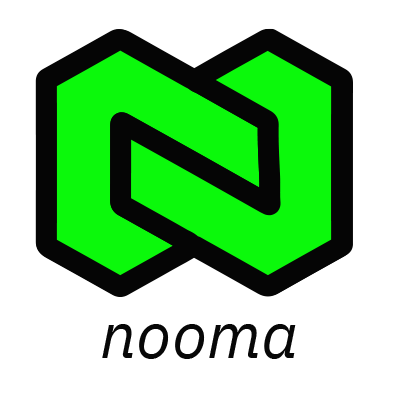Whether you’re tackling inefficiencies or brainstorming new initiatives, the success of a workshop depends on its preparation. Simply put, you get out what you put in. Let’s see how you can prepare effectively to bring the most impact to your team.
Define objectives
Why it matters: Setting clear objectives is the foundation of a successful workshop. Clear goals keep the session focused and keep all participants working towards a common purpose. This clarity also helps in evaluating the workshop’s success.
How to do it:
- Identify opportunities: Start by pinpointing the specific issues or opportunities your team, department, or company needs to address. Work with key stakeholders from the beginning to get input on top challenges or areas of improvement.
- Set specific goals: Aim for goals that are ambitious yet achievable within the workshop’s timeframe. For example, “The purpose of this workshop is to identify methods to improve hand-offs of marketing content between the marketing team and the review committee. Success means discovering 3-5 practical solutions to implement over the next 2 quarters.”
- Leadership endorsement: Invite leadership to participate in the agenda-setting. This can help make sure that leadership endorses the objectives and time spent on this workshop. At the same time, it will show the importance of the workshop to all participants.
Select the participants
Why it matters: Who you choose to participate in the workshop will greatly affect its success. Diverse perspectives and expertise lead to better solutions and more interesting discussions.
How to do it:
- Cross-functional teams: Include people from different departments and levels within the organization. This mix of skills and viewpoints is particularly useful for workshops focused on improving hand-offs between departments, addressing challenges that affect multiple areas, or understanding new initiatives that require input from various departments.
- Relevant expertise: Pick participants based on their knowledge, experience, and ability to contribute to the workshop’s goals. Make sure to include people with decision-making power and those who are open to new ideas. Having decision-makers involved improves the chances of the workshop outcomes actually being implemented effectively afterward.
- Diversity: Aim for diversity in skills, backgrounds, and perspectives. Include a mix of senior and junior staff to provide a range of insights and represent different functional areas. Diverse participants are especially valuable when you’re looking for the most innovative or creative solutions to a problem.
Communicate plans
Why it matters: Effective communication keeps everyone on the same page and ready for the workshop. This reduces misunderstandings and makes sure everyone can participate productively.
How to do it:
- Share objectives and agenda early: Send out the workshop objectives and agenda well before the workshop date. This gives participants time to think about the goals and prepare. Keep them updated if there are any changes.
- Set expectations: Clearly explain what you expect from participants, including any pre-work or background reading. Describe the workshop format, like whether there will be breakout sessions or group activities.
- Encourage feedback: Ask participants to share their questions or thoughts before the workshop. This helps you refine the agenda and address any concerns ahead of time.
Preparation is key to running a successful problem-solving workshop. By defining clear objectives, selecting the right participants, and communicating plans effectively, you set the stage for a productive and impactful session. Remember, the time you invest in preparation pays off in the form of engaged participants, focused discussions, and actionable solutions. Let’s go!

Preparation section for reference
Preparation involves setting clear goals, choosing the right participants, planning effective communication, and making sure everything is organized. Thorough preparation enhances the impact of the workshop and creates an environment where everyone can actively participate.
Despite preparation being common knowledge, when people are facilitating workshops, the fact is that most people don’t prepare or prepare minimally. Minimal preparation means you won’t get the participation, output, or solutions you’re looking for.
Why you should prepare
- Clarity and focus: Clear objectives keep the workshop on track and focuses on relevant issues
- Engagement: Engaging the right participants early on promotes active participation and diverse perspectives
- Efficiency: Proper planning and communication prevent misunderstandings and ensure smooth operation
- Alignment: Aligning objectives with strategic goals ensures the workshop supports the organization’s long-term vision
How to prepare
- Define objectives
- Select participants
- Communicate plans
- Manage logistics
Defining objectives
To define objectives, first identify specific problems or opportunities the workshop needs the team to focus on. Socialize the objectives with key stakeholders to gain alignment. Set goals that are ambitious yet attainable within the workshop’s timeframe. Make sure goals are specific and tied to outcomes.
Here is an example: “The purpose of this workshop is to brainstorm ideas to streamline our contracting process. This session will be successful if we leave with 3-5 key initiatives we plan to execute over the next 2-4 quarters”
Leadership should endorse the workshop objectives. They should also actively participate in the agenda-setting process to help align workshop outcomes with business goals. Leadership involvement signals the importance of the workshop to all participants.
Selecting participants
You will more than likely need a cross-functional group of people to participate in the workshop. Here are some general guidelines:
- Include individuals with relevant expertise and decision-making authority. Promote participation from diverse departments and levels within the organization. Consider including external stakeholders or experts if beneficial
- Select participants based on their expertise, experience, and ability to contribute to the workshop’s objectives. Strive for a mix of skills and perspectives. Prioritize individuals who are collaborative and open to new ideas
- Aim for a diverse group in terms of skills, backgrounds, and perspectives. Balance senior and junior staff to provide a range of insights. Represent different functional areas.
Communicate plans
Even though you have already spent countless hours preparing for the workshop, you still must communicate to your stakeholders. Here’s how you can get everyone is on the same page:
- Share objectives and agenda early – Send out the workshop objectives and agenda well in advance. This gives participants time to understand the goals and prepare their thoughts. Be clear about what you hope to achieve and how the workshop will be structured
- Set expectations – Clearly communicate what you expect from participants. Let them know about any pre-work or background reading they need to complete. Explain the format of the workshop, including any breakout sessions, group activities, or presentations
- Keep participants informed – Provide regular updates as the workshop approaches. This can include reminders, changes to the agenda, or additional materials. Use multiple channels to communicate, such as emails, internal messaging platforms, or meetings
- Encourage questions and feedback. Invite participants to ask questions or provide input before the workshop. This can help you fine-tune the agenda and address any concerns
Manage logistics
Develop an agenda of objectives, key topics, and activities. Schedule sufficient time for discussions, breaks, and networking. Provide background materials and pre-work assignments as needed
Use surveys or interviews to collect input on key topics and expectations. Review feedback to identify common themes and adjust the agenda accordingly. Ensure the workshop design addresses participants’ needs and interests.

ChatGPT input
This is a section of a downloadable guide for pharma marketers to learn about running a problem-solving workshop: Preparation involves setting clear goals, choosing the right participants, planning effective communication, and making sure everything is organized. Thorough preparation enhances the impact of the workshop and creates an environment where everyone can actively participate.
Despite preparation being common knowledge, when people are facilitating workshops, the fact is that most people don’t prepare or prepare minimally. Minimal preparation means you won’t get the participation, output, or solutions you’re looking for.
Why you should prepare
Clarity and focus: Clear objectives keep the workshop on track and focuses on relevant issues.
Engagement: Engaging the right participants early on promotes active participation and diverse perspectives.
Efficiency: Proper planning and communication prevent misunderstandings and ensure smooth operation.
Alignment: Aligning objectives with strategic goals ensures the workshop supports the organization’s long-term vision.
How to prepare
- Define objectives
- Select participants
- Communicate plans
- Manage logistics
- Defining objectives
To define objectives, first identify specific problems or opportunities the workshop needs the team to focus on. Socialize the objectives with key stakeholders to gain alignment. Set goals that are ambitious yet attainable within the workshop’s timeframe. Make sure goals are specific and tied to outcomes.
Here is an example: “The purpose of this workshop is to brainstorm ideas to streamline our contracting process. This session will be successful if we leave with 3-5 key initiatives we plan to execute over the next 2-4 quarters”
Leadership should endorse the workshop objectives. They should also actively participate in the agenda-setting process to help align workshop outcomes with business goals. Leadership involvement signals the importance of the workshop to all participants.
Selecting participants
You will more than likely need a cross-functional group of people to participate in the workshop. Here are some general guidelines:
Include individuals with relevant expertise and decision-making authority. Promote participation from diverse departments and levels within the organization. Consider including external stakeholders or experts if beneficial
Select participants based on their expertise, experience, and ability to contribute to the workshop’s objectives. Strive for a mix of skills and perspectives. Prioritize individuals who are collaborative and open to new ideas
Aim for a diverse group in terms of skills, backgrounds, and perspectives. Balance senior and junior staff to provide a range of insights. Represent different functional areas
Communicate plans
Even though you have already spent countless hours preparing for the workshop, you still must communicate to your stakeholders. Here’s how you can get everyone is on the same page:
Share Objectives and Agenda Early – Send out the workshop objectives and agenda well in advance. This gives participants time to understand the goals and prepare their thoughts. Be clear about what you hope to achieve and how the workshop will be structured.
Set expectations – Clearly communicate what you expect from participants. Let them know about any pre-work or background reading they need to complete. Explain the format of the workshop, including any breakout sessions, group activities, or presentations.
Keep participants informed – Provide regular updates as the workshop approaches. This can include reminders, changes to the agenda, or additional materials. Use multiple channels to communicate, such as emails, internal messaging platforms, or meetings
Encourage questions and feedback – Invite participants to ask questions or provide input before the workshop. This can help you fine-tune the agenda and address any concerns
Manage logistics
Develop an agenda of objectives, key topics, and activities. Schedule sufficient time for discussions, breaks, and networking. Provide background materials and pre-work assignments as needed.
Use surveys or interviews to collect input on key topics and expectations. Review feedback to identify common themes and adjust the agenda accordingly. Ensure the workshop design addresses participants’ needs and interests.
Based on this content, please create a ~600-word blog post with an intro, 3 main points, and a conclusion. Use your custom instructions. Use these rules:
- Use less bloviated language
- Directly address the reader
Use active voice language: Use clear, precise language: This instruction aligns closely with the Reddit user’s complaint about superfluous language. Asking for clarity and precision can lead to more straightforward and less verbose responses.
Clarity: Clarify ambiguous queries: This is another critical instruction in avoiding over-complication. By focusing on the clarity of the question first, the answer is more likely to be direct and to the point.
Expertise: Answer with precision: This directive underscores the need for well-targeted, expert-level information, which can naturally help avoid verbosity by focusing on substance over style.
Natural tone: Craft warm responses: While not directly addressing verbosity, a natural tone might make any complexity in the response feel less like jargon and more like a nuanced conversation.
Analysis: Dive deep; challenge assumptions: Though aimed at depth, this can also help in trimming the fat. A deep analysis often necessitates brevity in other areas to maintain focus.
Transparency: Prioritize substance: This essentially advises against any fluffy, filler content. Prioritizing substance over style could lead to a more compact, informative response.

How to effectively prepare for a problem-solving workshop
Running a problem-solving workshop can be a game-changer for any organization. Whether you’re tackling inefficiencies or brainstorming new initiatives, the success of your workshop hinges on thorough preparation. Let’s dive into the key aspects of preparation to ensure your workshop yields the best results.
1. Define clear objectives
Why it matters: Setting clear objectives is the foundation of a successful workshop. Clear goals keep the session focused and ensure that all participants are working towards a common purpose. This clarity also helps in evaluating the workshop’s success.
How to do it:
- Identify problems or opportunities: Start by pinpointing the specific issues or opportunities your team needs to address. Engage with key stakeholders to ensure everyone is aligned.
- Set specific goals: Aim for goals that are ambitious yet achievable within the workshop’s timeframe. For instance, “The purpose of this workshop is to brainstorm ideas to streamline our contracting process. Success means identifying 3-5 key initiatives to execute over the next 2-4 quarters.”
- Leadership endorsement: Ensure that leadership not only endorses the objectives but also participates in the agenda-setting. This signals the importance of the workshop to all participants.
2. Select the right participants
Why it matters: The participants you choose will significantly impact the workshop’s effectiveness. Diverse perspectives and expertise lead to more comprehensive solutions and richer discussions.
How to do it:
- Cross-functional teams: Include individuals from various departments and levels within the organization. This ensures a mix of skills and viewpoints.
- Relevant expertise: Choose participants based on their expertise, experience, and ability to contribute to the workshop’s goals. Include those with decision-making authority and those who are open to new ideas.
- Diversity: Strive for diversity in skills, backgrounds, and perspectives. Balance senior and junior staff to provide a range of insights and represent different functional areas.
3. Communicate plans effectively
Why it matters: Effective communication ensures that all participants are prepared and aligned with the workshop’s objectives. This minimizes misunderstandings and maximizes productive participation.
How to do it:
- Share objectives and agenda early: Send out the workshop objectives and agenda well in advance. This gives participants time to prepare their thoughts and understand the goals.
- Set expectations: Clearly communicate what you expect from participants, including any pre-work or background reading. Explain the format of the workshop, such as breakout sessions or group activities.
- Regular updates: Keep participants informed with regular updates as the workshop approaches. Use multiple channels like emails, internal messaging platforms, or meetings.
- Encourage feedback: Invite participants to ask questions or provide input before the workshop. This helps fine-tune the agenda and address any concerns.










